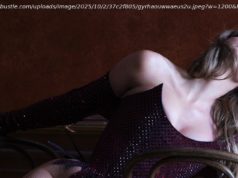Moving a dementia patient from their care center, or home, to a concert hall can be labor intensive depending on the physical needs of the person. What if the concert hall, and the social interaction, could come to them?
Photographer: David Paul Morris/Bloomberg
When I put on the Oculus Go headset, ready for a 360-degree performance by The Fort Collins Symphony, I was a little surprised by the first scene: The lobby of the Fort Collins Lincoln Center, where a pre-concert social event is taking place. The second scene was a little unexpected too: Sitting at a table with four other people who are telling stories about their lives and talking about the program that inspired this video. Finally, in the third scene, I am in the concert hall, where music director Wes Kenney gives a pre-concert talk. Then Tchaikovsky’s Symphony No. 4 begins.
These are early clips, not available for public consumption, to be tested in focus groups by a group of researchers from multiple disciplines at Colorado State University. (I am also on faculty at CSU, but not part of this research team, nor compensated in any way for covering this project). The clips offer fascinating possibilities for how art, virtual reality and dementia might interact.
„Especially since we’re doing something with people who have cognitive impairments,“ Meara Faw, an assistant professor in Communication Studies, explains, „… we want to make sure it’s not causing any distress.“
Once that question is satisfied, another emerges: Could a VR symphony experience help people with dementia improve their mood, memory and attention?
The video and research, funded by an National Endowment for the Arts grant and produced by Fort Collins VR startup Blue Penguin, is an experiment and investigation into the power of immersive technology and art on the human mind. But it is also an extension of something these researchers already know from an initial collaboration launched three years ago between CSU and FCS called B-Sharp. The premise was simple enough: Offer 30 dementia patients and their caregivers free season tickets to the symphony’s Masterworks Series and test whether it improves cognitive functioning.
„I told [fellow researchers], you’re not going to get improvements,“ says Deana Davalos, associate professor in the Department of Psychology and the director of CSU’s Aging Clinic of the Rockies. „Just stabilization after nine months, that would be really be great, we should be happy, because that’s what drugs get. And we actually got a statistically significant improvement, a correlation between number of symphonies attended and degree of improvement.“
The power of a symphony experience to improve cognitive decline, thanks to a combination of social and artistic stimuli, is a potentially powerful finding (a paper describing their research results is currently submitted), but would such effects transfer to immersive media? Other examples of VR for dementia patients have shown promise, especially in use for reminiscence therapy, but this idea may also help with one of the most insidious aspects of dementia: Social isolation. Moving a dementia patient from their care center, or home, to a concert hall can be difficult depending on the physical needs of the person. What if the concert hall, and virtual social interaction, could come to them? The results could depend on a variety of factors, including how the concert is shot (what angle and how close), how the components are edited together, how long someone can comfortably be in the headset, and potentially much more.
„We have about 85 minutes or so of footage,“ says Kaden Strand, CEO of Blue Penguin. „And so the question that we have is… Where do we draw the lines?“
Is it one long video or several shorter clips, should it be navigable, should it be truncated as an experience? If they find those answers, with products such as the Oculus Go and even smartphone-based headsets, thousands of dementia patients could experience something similar to what the B-Sharp participants enjoyed.
Thinking back on the experience a few days later, the music was fun to listen to, but so were the thoughts and stories of my virtual table mates. What is it about art that has the power to heal, and transform—is it is the experience, the company, the music or all of them? There may be answers in those Oculus headsets.
Note: This is part of a monthly series exploring the collaboration between immersive technology and art forms. Read the previous installment here.
I write about the ever-changing landscape of digital media, primarily through the lens of creators and data. In addition to Forbes, I have written for The New Yorker, New York, Salon, National Catholic Reporter, Native American Times, and The Kansas City Star. I have a Ph. D….
Continue this conversation below or connect with me on Twitter .






